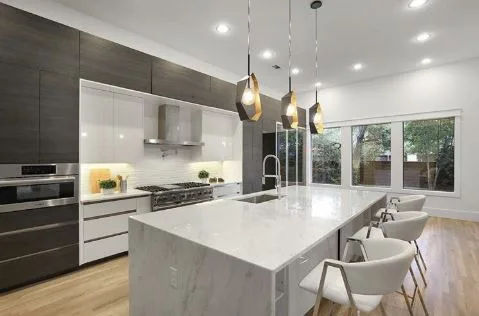A Remodeling Renaissance: Transforming Your Austin Home with an Expert’s Touch
The Heart of the Home: A Guide to Unlocking Your Austin Property’s Potential
Austin, Texas, a city known for its vibrant culture, eclectic style, and unique blend of historic charm and modern innovation. Just as the city evolves, so too do the needs and desires of its residents. Homeowners are no longer content with cookie-cutter designs; they crave spaces that reflect their individuality, enhance their daily lives, and increase their property’s value. This is where the expertise of a premier remodeling contractor Austin TX, becomes invaluable. A skilled professional acts as both an artist and an engineer, translating your dreams into tangible, breathtaking spaces. They are the orchestrators of a complex process, ensuring every detail, from the initial blueprint to the final coat of paint, is executed with precision and care. When you partner with a reputable team like Tayton Construction, you’re not just hiring a crew; you’re engaging in a collaborative journey to redefine your living environment. This partnership is built on trust, transparency, and a shared vision of creating a home that is not only beautiful but also functional and enduring.
Navigating the Renovation Landscape: What to Expect from a Quality Remodeling Contractor
Embarking on a home renovation project can feel overwhelming. The sheer number of decisions—from material selections to design choices—can be daunting. A truly exceptional remodeling contractor simplifies this process, acting as a trusted guide. They possess an intimate knowledge of local building codes, design trends, and the intricacies of project management. Their role extends far beyond swinging a hammer; they are problem-solvers, innovators, and communicators. They work tirelessly to anticipate potential challenges, manage budgets effectively, and keep the project on schedule. This proactive approach minimizes stress for the homeowner and ensures a smoother, more enjoyable experience. A quality contractor will also have a strong network of trusted suppliers and subcontractors, guaranteeing that every component of your renovation—from custom cabinetry to intricate tile work—is of the highest quality.
From Vision to Reality: The Art and Science of Design-Build
The design-build model is a powerful approach that streamlines the entire renovation process. Instead of working with separate designers and contractors, a single team handles both the creative and logistical aspects of your project. This integrated approach fosters seamless communication, reduces the risk of miscommunication between parties, and often leads to a more efficient and cost-effective outcome.
- Initial Consultation: The process begins with a detailed discussion about your goals, budget, and lifestyle. This is the time to share your ideas, show inspiration photos, and articulate your vision for the space.
- Design and Planning: The design team takes your input and creates detailed plans, renderings, and material selections. This phase allows you to visualize the finished product and make informed decisions before construction begins.
- Budget and Timeline: A clear, itemized budget and a realistic project timeline are established. Transparency is key here, ensuring there are no hidden costs or unexpected delays.
- Construction and Execution: Once the plans are approved, the construction phase begins. The contractor manages all aspects of the build, from demolition to final installation, ensuring quality control at every stage.
- Final Walkthrough and Completion: The project concludes with a final walkthrough to ensure every detail meets your satisfaction. The contractor provides a comprehensive wrap-up, including any necessary warranty information.
The Transformative Power of Kitchen and Bathroom Renovations
In the world of home remodeling, kitchen and bathroom renovations offer some of the highest returns on investment. A modern, functional kitchen becomes the social hub of the home, a place for family gatherings and culinary exploration. Similarly, a thoughtfully designed bathroom can be a private sanctuary, a spa-like retreat from the stresses of daily life.
- Kitchen Remodeling:
- Optimizing workflow with a well-designed layout.
- Installing energy-efficient appliances and smart home technology.
- Selecting durable, beautiful countertops and custom cabinetry.
- Enhancing lighting to create an inviting and functional space.
- Bathroom Remodeling:
- Creating a tranquil atmosphere with new fixtures, tile, and color palettes.
- Upgrading to water-saving toilets and showerheads.
- Adding luxury features like heated floors, steam showers, or a freestanding tub.
- Maximizing storage with clever, built-in solutions.
Maximizing Your Investment: Beyond the Aesthetics
While the aesthetic appeal of a renovation is often the primary driver, a well-executed project offers much more. A professional remodeling contractor understands that a home is a long-term investment. They can advise on materials and upgrades that not only look fantastic but also improve energy efficiency, enhance structural integrity, and increase your home’s market value. A new roof, updated insulation, or modern, high-performance windows are examples of upgrades that provide both immediate benefits (lower utility bills) and long-term value. Moreover, a quality renovation can improve your home’s safety and accessibility, making it a comfortable and secure place to live for years to come. This focus on both form and function ensures that your renovation is a wise financial decision, not just a beautiful one.
The Austin Vibe: Incorporating Local Style into Your Remodel
Austin is a city of unique neighborhoods, each with its own character and architectural style. A skilled contractor understands this and can help you incorporate elements of the “Austin vibe” into your renovation. Whether you’re aiming for a sleek, modern look in South Congress, a rustic, Hill Country feel in Westlake, or a charming, historic restoration in Clarksville, a local expert can guide you. This could involve using reclaimed wood, incorporating local art, or designing outdoor living spaces that take advantage of Austin’s beautiful weather. The goal is to create a home that feels authentic to its location, seamlessly blending with the surrounding community while still reflecting your personal style.
Key Considerations for a Smooth Renovation
A successful home renovation is a journey that requires careful planning and a clear understanding of the process. To make your project as smooth as possible, there are several key factors to consider before you even start looking for a contractor.
- Financial Planning:
- Establish a realistic budget, including a contingency fund of 10-20% for unexpected issues.
- Explore financing options, such as home equity loans, HELOCs, or personal loans.
- Discuss payment schedules with your contractor to ensure they align with project milestones.
- Understanding Permits:
- Most major renovations in Austin require permits to ensure the work is up to code.
- Your contractor should handle the permit process for you, but it’s good to be aware of what’s involved.
- Projects that typically need permits include structural changes, new electrical or plumbing, and additions.
The Modern Austin Home: Embracing 2025 Design Trends
As we look ahead, home design trends in Austin are reflecting a move towards sustainability, technology, and personal well-being. A forward-thinking contractor can help you incorporate these elements into your remodel, ensuring your home is not only beautiful today but also prepared for the future.
- Nature-Inspired Interiors: Expect to see a focus on organic materials like natural stone, wood, and textured fabrics. Earthy color palettes, from deep greens to terracotta, are also becoming increasingly popular.
- Smart, Seamless Technology: From automated lighting and climate control to smart kitchens that manage inventory, technology is being integrated seamlessly into home designs to enhance convenience and energy efficiency.
- Wellness-Centric Spaces: Homeowners are prioritizing spaces for relaxation and health. Spa-like bathrooms with soaking tubs and saunas, as well as dedicated meditation or home gym areas, are now highly sought-after features.
- Multi-Functional Rooms: With the rise of remote work, rooms are being designed for flexibility. This includes guest rooms that double as home offices or dining areas that can be easily converted into a creative workspace.
The Path Forward: Choosing Your Partner in Transformation
Selecting the right remodeling contractor is the most critical step in your renovation journey. It’s a decision that will impact your budget, timeline, and the ultimate success of your project. When evaluating potential partners, look for a company with a strong portfolio of past work, glowing client testimonials, and a commitment to clear communication. Ask for references and don’t hesitate to visit a completed project if possible. A professional will be happy to provide this information and will approach your project with enthusiasm and a clear plan. They will be more than just a contractor; they will be your partner in creating a home that you will love for years to come. The right team can transform a daunting project into an exciting and rewarding experience, resulting in a space that not only meets your needs but exceeds your wildest expectations.
Conclusion
Renovating your home in Austin is an opportunity to not only update your living space but to truly enhance your quality of life. The right remodeling contractor brings expertise, creativity, and a dedicated partnership to the table, ensuring your vision is brought to life with precision and care. By choosing a professional who understands the unique character of Austin and is committed to quality craftsmanship, you are making an investment in your home’s future and your family’s happiness. The journey of transforming your home is a significant one, and with the right team by your side, it can be a truly remarkable experience. The results of a well-executed renovation can be felt for generations, a testament to the value of quality work and thoughtful design. If you’re planning a major home improvement project, understanding the intricacies of the process can be a great starting point for any homeowner.
Frequently Asked Questions (FAQs)
Q: How long does a typical home renovation project take?
A: The timeline for a renovation project can vary significantly depending on the scope of work. A small bathroom remodel might take 4-6 weeks, while a major whole-home renovation could take several months. A professional contractor will provide a detailed timeline during the planning phase.
Q: How can I ensure my renovation stays within budget?
A: The key to staying on budget is clear communication and detailed planning from the outset. A good contractor will provide an itemized budget and will notify you immediately of any potential changes. Choosing all your materials and finishes before construction begins can also help prevent costly delays.
Q: Is it better to renovate or to buy a new home?
A: This is a common question, and the answer depends on your personal circumstances. Renovating allows you to stay in a neighborhood you love and customize your home to your exact specifications. Buying new might be a better option if your current home’s layout or structure simply cannot accommodate your needs. A renovation can often be a more cost-effective choice.
Q: Do I need to get permits for my renovation?
A: Most significant renovation projects, especially those involving structural changes, electrical work, or plumbing, require permits from the city. A reputable remodeling contractor will be knowledgeable about the permitting process and will handle it for you. This ensures your project complies with all local building codes and regulations.
Q: What is the benefit of a “design-build” firm?
A: The design-build model offers a streamlined, efficient process by having a single team manage both the design and construction phases. This eliminates the communication gaps that can occur between separate designers and contractors, often leading to a smoother project, fewer delays, and more accurate budgeting.





